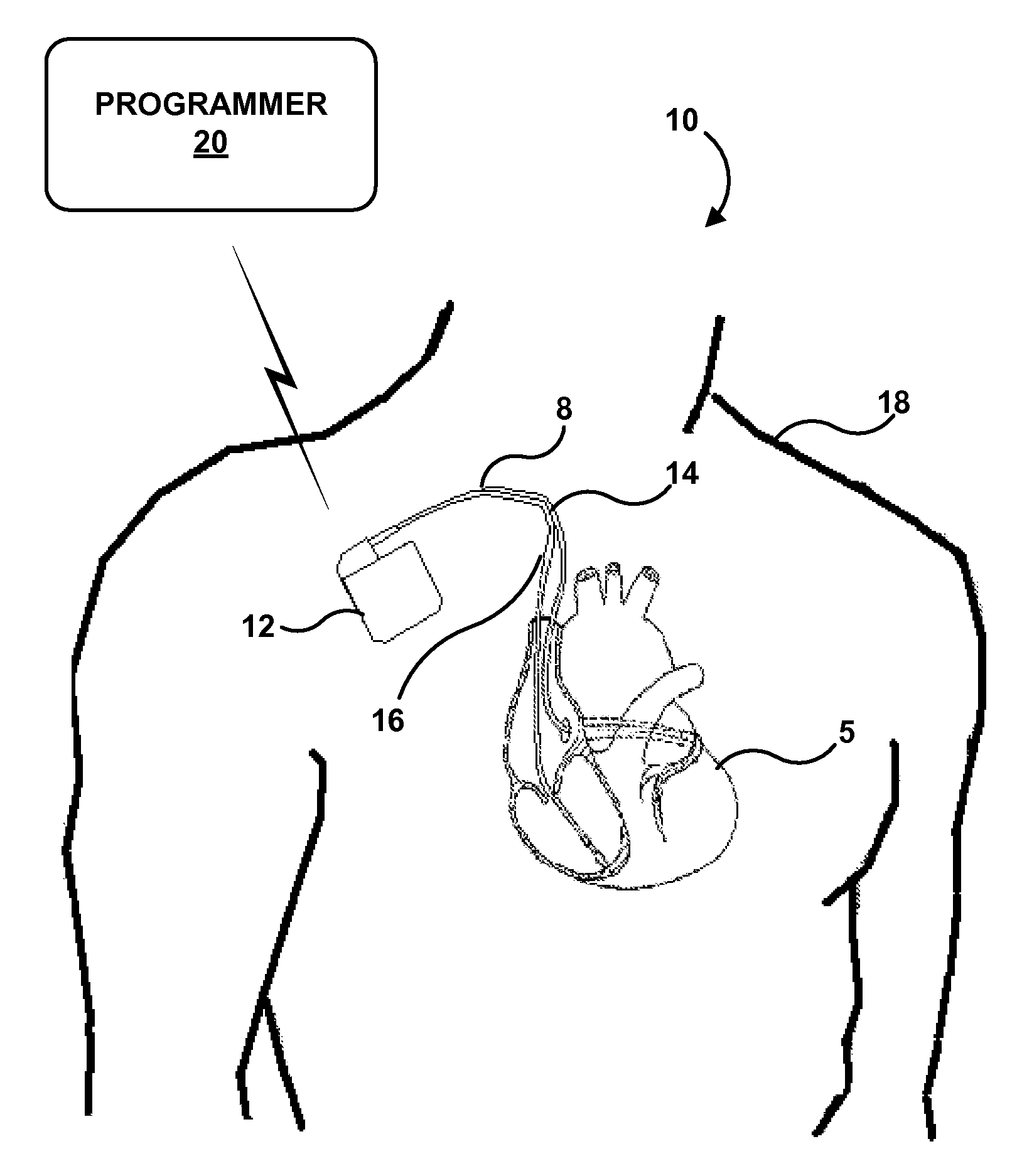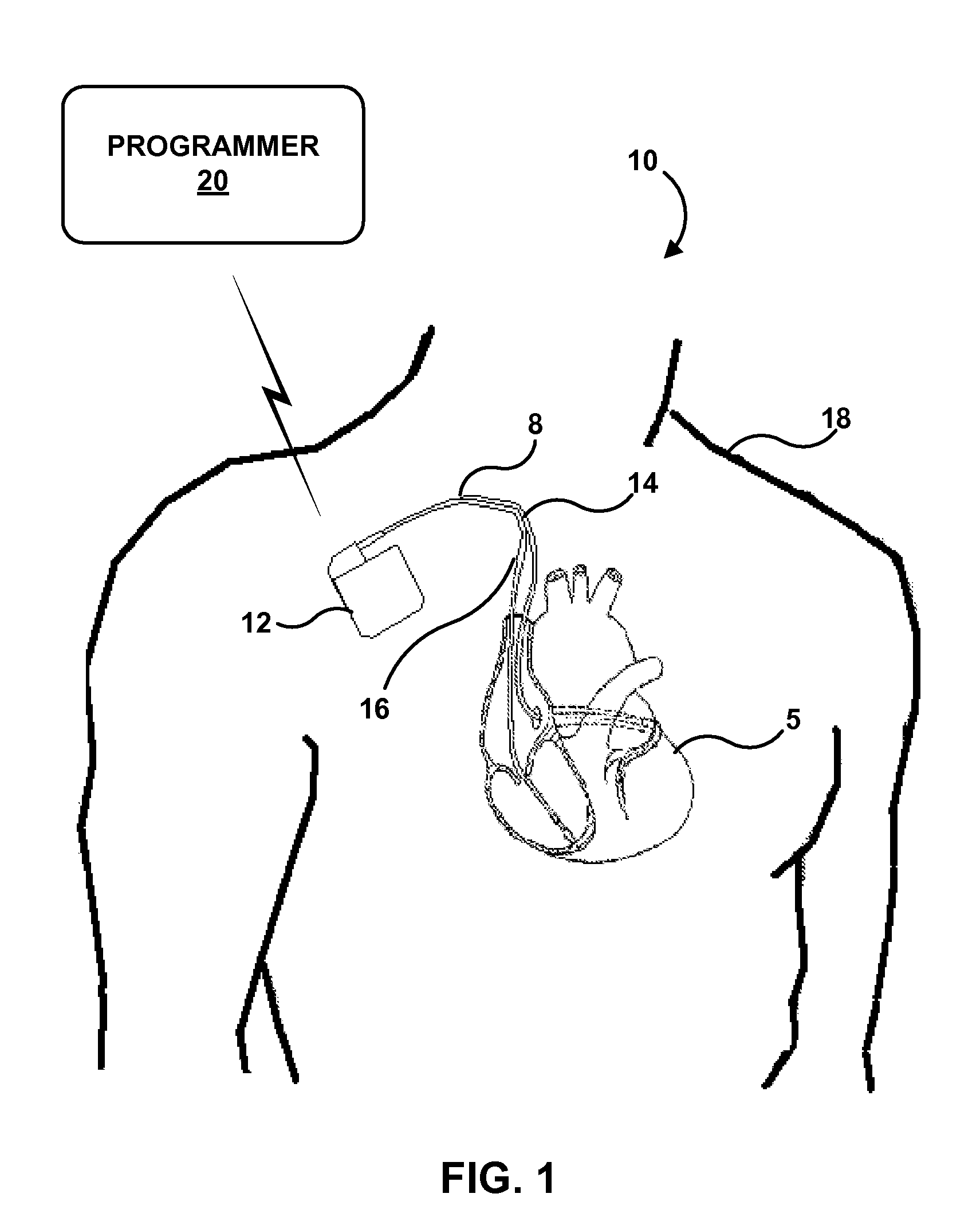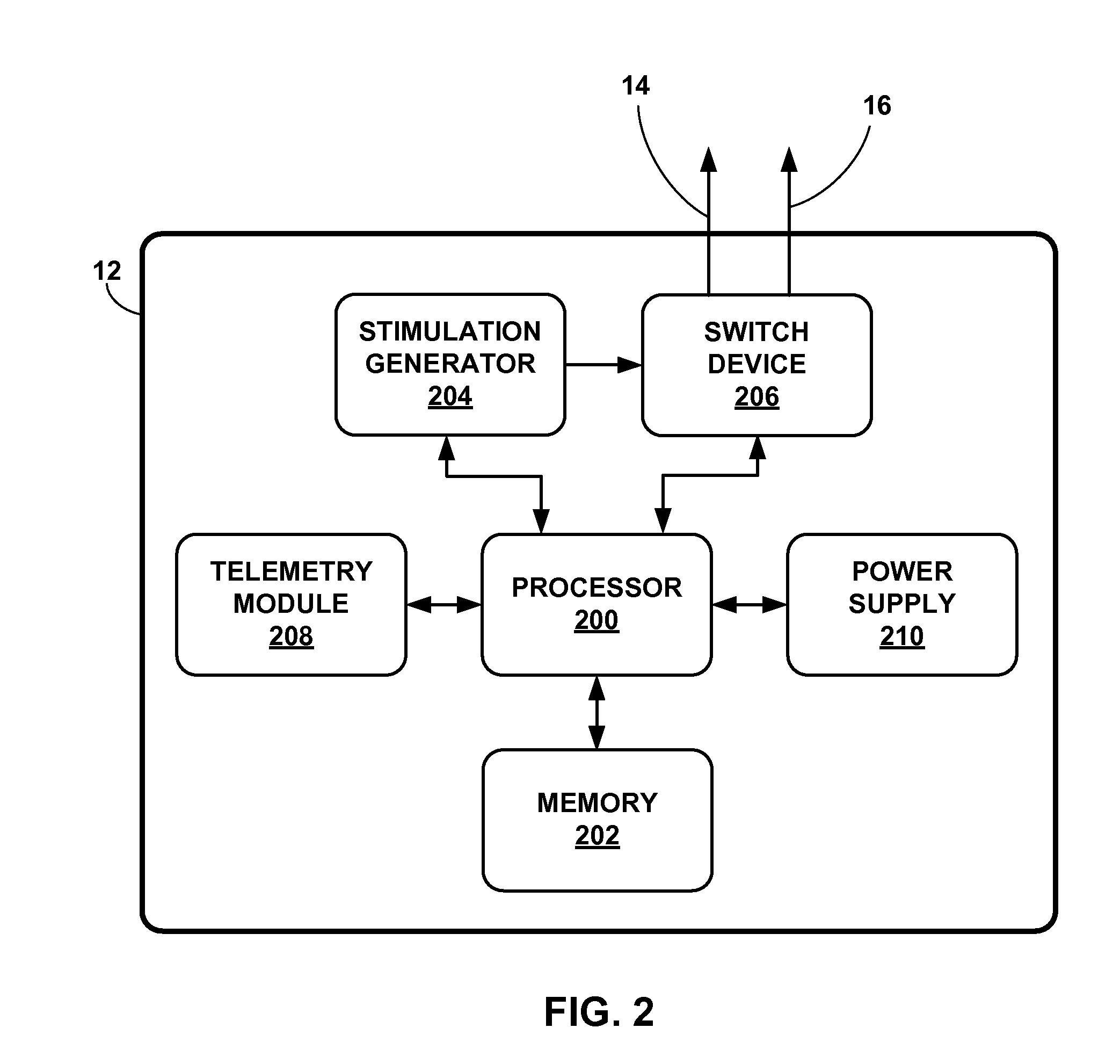Electrode configurations for directional leads
a directional lead and electrode configuration technology, applied in the field of medical devices, can solve the problems of undesirable phrenic nerve stimulation, non-optimal lv pacing electrode placement of lv lead electrodes, and general undesirable stimulation of neck muscles, and achieve the effect of preventing the propagation of electrical fields
- Summary
- Abstract
- Description
- Claims
- Application Information
AI Technical Summary
Benefits of technology
Problems solved by technology
Method used
Image
Examples
Embodiment Construction
[0036]While the description primarily refers to implantable medical leads and implantable medical devices, such as pacemakers and pacemaker-cardioverter-defibrillators, that deliver stimulation therapy to a patient's heart, the features and techniques described herein are useful in other types of medical device systems, which may include other types of implantable medical leads and implantable medical devices. For example, the features and techniques described herein may be used in systems with medical devices that deliver neurostimulation to the vagus nerve. As other examples, the features and techniques described herein may be embodied in systems that deliver other types of neurostimulation therapy (e.g., spinal cord stimulation or deep brain stimulation), stimulation of one or more muscles or muscle groups, stimulation of one or more organs such as gastric system stimulation, stimulation concomitant to gene therapy, and, in general, stimulation of any tissue of a patient.
[0037]In...
PUM
 Login to View More
Login to View More Abstract
Description
Claims
Application Information
 Login to View More
Login to View More - R&D
- Intellectual Property
- Life Sciences
- Materials
- Tech Scout
- Unparalleled Data Quality
- Higher Quality Content
- 60% Fewer Hallucinations
Browse by: Latest US Patents, China's latest patents, Technical Efficacy Thesaurus, Application Domain, Technology Topic, Popular Technical Reports.
© 2025 PatSnap. All rights reserved.Legal|Privacy policy|Modern Slavery Act Transparency Statement|Sitemap|About US| Contact US: help@patsnap.com



